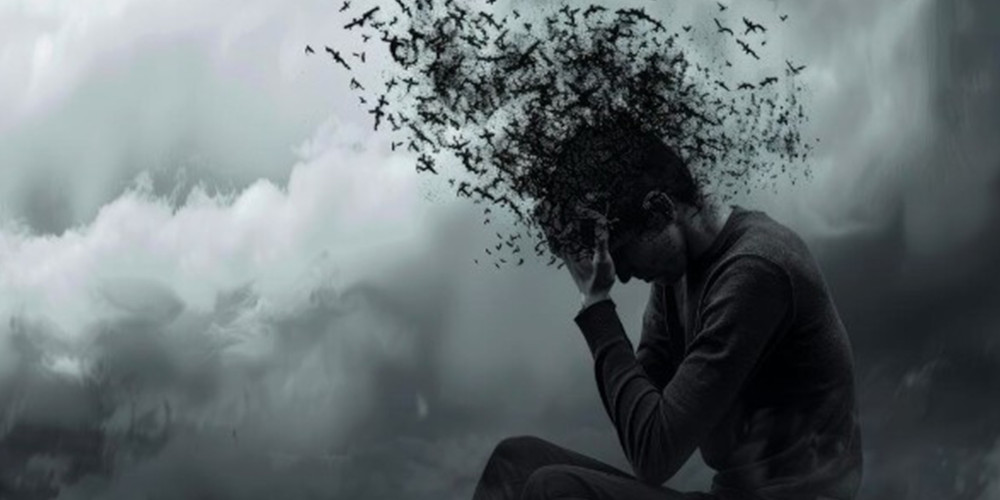The Angry Addict, How Rage Masks Grief

Anger is one of the most misunderstood emotions in addiction. To the outside world, the angry addict looks volatile, destructive, impossible to reason with. But beneath that explosion is something heartbreakingly simple, grief. Unspoken, unprocessed, and buried so deep it has nowhere to go but out. Rage is just sadness with nowhere safe to land.
Addiction feeds on emotion, and anger is the easiest one to access. It’s powerful, it’s protective, and it keeps people at a distance. But it also keeps the addict trapped, stuck between shame and defiance, unable to connect, and terrified of what might surface if the anger stops.
The Function of Anger
Anger is energy. It’s motion, direction, and defence. For many addicts, it’s the only emotion that feels safe to express. You can’t cry without looking weak, but you can scream without losing control. Anger feels strong, righteous, alive, a temporary relief from the shame, fear, and despair that live underneath.
Rage becomes a shield. It says, “Don’t get close,” and “I’m still in control.” It masks the vulnerability that comes from feeling powerless. When you’ve spent years being hurt, abandoned, or unseen, anger feels like power. It’s survival.
But what begins as protection eventually becomes prison. The walls that keep pain out also keep healing out. Rage isolates. It alienates loved ones, drives away support, and convinces the addict that they’re safer alone. Over time, it stops being armour and becomes identity.
Grief in Disguise
Behind most anger in addiction is grief, for lost time, lost trust, lost self-respect. It’s the mourning of what addiction took and what never was. But grief requires softness, stillness, and surrender, three things addicts are taught to avoid. So instead of crying, they fight. Instead of grieving, they rage.
Anger is easier than pain. It’s more predictable, less exposing. You can aim anger outward, grief has nowhere to hide. But if you trace the rage far enough back, it always leads to loss, the father who left, the childhood that wasn’t safe, the love that couldn’t be kept, the person they used to be before everything went wrong.
Many people in recovery only discover their grief once the anger begins to settle. It’s disorienting. You think you’re finally calm, and suddenly you’re crying in therapy over a memory you thought you’d buried. That’s not regression, that’s progress. The rage did its job, it protected you long enough for you to survive the unbearable.
Why Rage Feels Safer
Anger gives the illusion of control. When you’re angry, you’re not powerless, you’re in motion. For addicts, control is everything. Life has been chaotic for so long that any sense of agency, even through rage, feels grounding. But control born of fear is never peace. It’s panic disguised as confidence.
Rage also deflects responsibility. If everyone else is the problem, the system, the spouse, the therapist, you don’t have to face yourself. You stay in the loop of blame and justification because it’s less painful than guilt. You can be angry at the world without having to grieve your own part in it.
For many men, especially, anger is the only emotion society permits. Crying is weakness, vulnerability is failure. So boys learn early, turn hurt into rage. By adulthood, they’ve lost the language for pain altogether. In rehab, that’s often the first battle, teaching someone that sadness won’t destroy them, that tears are just grief leaving the body.
The Explosion and the Collapse
Anger doesn’t stay contained. When suppressed long enough, it either implodes into depression or explodes into chaos. Addicts often swing between both, destructive outbursts followed by crushing guilt. The cycle feeds the addiction, shame fuels rage, rage fuels use, use fuels more shame.
Many people mistake these explosions for personality flaws. But in truth, they’re trauma responses. When someone has lived through years of emotional invalidation, anger becomes the only way to be heard. It’s communication through destruction, “If I can’t be understood, at least I’ll be noticed.”
The aftermath is predictable, broken relationships, isolation, and deep regret. The addict apologises, promises to change, then repeats the pattern. Not because they want to hurt anyone, but because they don’t yet know another way to release the pain that’s consuming them.
The Turning Point
Recovery begins when you stop trying to manage anger and start listening to it. Anger isn’t the enemy, it’s a messenger. It’s pointing to something deeper, a boundary crossed, a wound ignored, a loss ungrieved. The question isn’t “How do I stop being angry?” but “What is my anger trying to protect?”
In therapy, this often looks like sitting in silence long enough to feel the sadness underneath the fury. That’s excruciating for someone who’s built their identity around strength. But it’s the only way out. Because once you touch the grief, the anger softens. You realise it wasn’t rage at all, it was pain demanding attention.
The Grief Beneath the Surface
Grief in recovery isn’t just for what’s been lost externally, it’s for the internal damage too. It’s mourning the version of yourself you might have been if trauma, addiction, or shame hadn’t taken over. It’s the ache of seeing what you’ve done to people you love and having to face that without escape.
Many addicts say that grief feels like punishment. It’s not. It’s proof that the humanity you thought you lost is still there. Feeling grief means you’re no longer numb. It means you care again. It means your heart, battered, guarded, and raw, still works.
Grief brings humility. It replaces self-righteousness with remorse, blame with empathy. When anger finally gives way to grief, something shifts, not just in emotion, but in posture. The shoulders drop. The jaw unclenches. You stop fighting everyone, including yourself.
Healing the Relationship with Anger
The goal isn’t to get rid of anger. It’s to understand it. Anger isn’t toxic, repression is. Recovery means learning to express anger without destruction, to use it as information rather than a weapon. Healthy anger says, “Something’s wrong here.” It advocates for your boundaries without burning the world down in the process.
This kind of emotional maturity takes time. In treatment, people learn grounding techniques, breathing, journaling, walking away before reacting. But the deeper work is acceptance, realising that anger doesn’t make you bad. It makes you human.
When you stop fearing anger, it loses its grip. It becomes just another feeling, not a threat, not a trigger. And in that space, empathy returns. You start seeing your own suffering mirrored in others. The walls built by rage begin to crumble, and what’s left is connection, the one thing anger was trying to protect all along.
The Ripple Effect
When an addict begins to heal their relationship with anger, everyone around them feels it. Families begin to breathe again. Partners stop walking on eggshells. Children see that apologies can be real and that softness doesn’t equal weakness. The home, once ruled by volatility, starts to feel safe again.
And the addict, for the first time, starts to feel safe within themselves. They no longer need to explode to be heard. They don’t need to control to feel powerful. They can feel pain without drowning in it. That’s not the absence of anger, it’s the mastery of it.
From Rage to Responsibility
True recovery is accountability wrapped in compassion. It’s looking at the wreckage your anger caused and making amends, not with excuses, but with ownership. It’s saying, “I hurt you because I was hurting,” and meaning it.
When you start owning your emotions instead of being owned by them, you break the pattern. You replace reaction with reflection, destruction with dialogue. You stop running from grief and start integrating it. That’s how anger transforms from chaos into clarity.
The Quiet After the Storm
When the rage finally quiets, what’s left isn’t weakness, it’s relief. The silence you once feared becomes peace. You no longer need to shout to be heard, because you’ve learned to listen, to yourself, to others, to the ache that was always underneath.
The angry addict isn’t just angry, they’re grieving. Grieving the loss of innocence, safety, time, and trust. But when that grief is finally allowed to exist, healing begins. The rage no longer defines them, it refines them.
And that’s when recovery stops being about abstinence, and starts being about wholeness.






